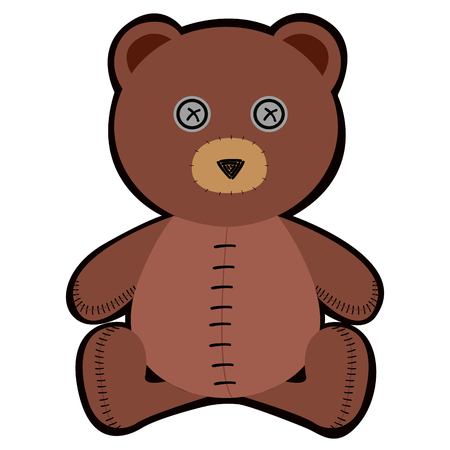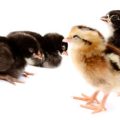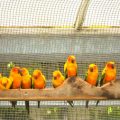Introduction to Pet Bird Health in the UK
Keeping pet birds has become increasingly popular across Britain, with households embracing a variety of avian companions. From the cheerful budgerigar to the intelligent African grey parrot, and the melodious canary, British pet owners enjoy a diverse range of species. Each type brings its own unique personality, care requirements, and health considerations. Below is a quick overview of some common pet bird species found in the UK:
| Species | Key Traits | Common Health Concerns |
|---|---|---|
| Budgerigar (Budgie) | Small, sociable, colourful | Respiratory issues, obesity |
| Canary | Songbird, bright plumage | Air sac mites, feather disorders |
| Cockatiel | Affectionate, crested head | Liver disease, feather plucking |
| African Grey Parrot | Highly intelligent, talkative | Calcium deficiency, beak problems |
| Lovebird | Small, lively, pair-bonded | Nutritional imbalances, aggression injuries |
Recognising early signs of disease in these birds is vital for their wellbeing. Birds are instinctively adept at hiding symptoms of illness—a survival mechanism from their wild ancestors—meaning that by the time outward signs are obvious, diseases may have progressed significantly. Early detection not only improves treatment outcomes but also minimises distress for both bird and owner. As a result, understanding what is ‘normal’ for your pet bird and staying vigilant for subtle changes in behaviour or appearance are essential skills for every British bird keeper.
Understanding Normal Bird Behaviour and Appearance
Before you can spot early signs of illness in British pet birds, it’s essential to have a clear understanding of what healthy behaviour and appearance look like. Observing your bird’s daily routines, vocalisations, posture, and plumage is crucial for any pet owner or keeper. However, these characteristics can vary depending on the species commonly kept in the UK, such as budgerigars, cockatiels, canaries, and finches.
Key Traits of Healthy British Pet Birds
| Trait | Description | Notable Species Differences |
|---|---|---|
| Activity Level | Active, alert, responsive to environment and people | Budgies and cockatiels are more playful; canaries may be less interactive but should still be inquisitive |
| Vocalisation | Regular chirping or singing appropriate for species | Canaries sing melodiously; budgies chatter; cockatiels whistle and mimic sounds; zebra finches are quieter but communicate in pairs or groups |
| Posture | Upright stance, balanced perching, no persistent fluffing of feathers except during sleep or cold spells | Cockatiels may raise crests when alert or excited; persistent fluffed up feathers can indicate illness across all species |
| Plumage Condition | Smooth, clean feathers with no bald spots or excessive moulting outside moulting season | Bald patches are rare in healthy birds; moulting patterns differ: budgies moult gradually, while canaries have a more defined season |
| Appetite & Droppings | Steady appetite with regular eating habits; droppings are consistent in colour and texture for species | Cockatiel droppings are larger than those of finches; sudden changes in either may indicate health concerns regardless of species |
Observational Tips for Owners
- Spend time daily watching your bird at different times to establish normal behaviour patterns.
- Take note if your bird becomes withdrawn, less vocal, or unusually quiet – these subtle changes can be among the first signs of illness.
- Familiarise yourself with typical feather condition and moulting cycles for your bird’s species.
The Importance of Species-Specific Knowledge
Recognising what is “normal” varies between species. For example, a quiet day from a usually chatty budgie is concerning, whereas some canaries may naturally enjoy periods of silence. By understanding these subtle differences and keeping detailed observations, owners across the UK can play an active role in safeguarding their pet birds’ wellbeing.

3. Common Early Signs of Disease in British Pet Birds
Recognising illness early in pet birds is crucial for successful treatment and recovery. As many avian species instinctively hide their symptoms to avoid appearing vulnerable, British bird owners must be vigilant and proactive. Here are some typical warning signs that often indicate the onset of disease:
General Early Warning Symptoms
| Symptom | Description | Commonly Affected Species |
|---|---|---|
| Fluffed Feathers | Birds appear puffed up, often sitting still and trying to conserve heat; this is a common sign of discomfort or fever. | Budgerigars, Canaries, Finches, Cockatiels |
| Changes in Droppings | Alterations in colour, consistency, or frequency of droppings can signal digestive issues, infections, or organ problems. | All species, especially noticeable in Parrots and Budgies |
| Altered Activity Levels | Lethargy, reluctance to fly or climb, and spending more time at the bottom of the cage are classic red flags. | Lovebirds, African Greys, Parakeets |
| Loss of Appetite | Eating less or ignoring favourite foods may point to underlying health concerns. | All caged bird species |
| Changes in Vocalisation | Becoming unusually quiet or producing abnormal sounds can indicate distress or respiratory problems. | Songbirds like Canaries, and Talkative Parrots |
Species-Specific Indicators to Watch For
- Budgerigars: Cere (the area above the beak) discolouration or crusting may indicate hormonal imbalances or infection.
- Canaries: Laboured breathing and tail bobbing are particularly concerning in these small songbirds.
- Cockatiels: Frequent sneezing with nasal discharge may signal respiratory infections common in UK homes with central heating.
- African Greys: Feather plucking can be both a behavioural issue and an early sign of skin disease or internal discomfort.
The Importance of Prompt Action
If you notice any of these symptoms—especially if they persist for more than 24 hours—it’s essential to contact an avian vet familiar with British pet bird breeds. Early intervention can make all the difference between a swift recovery and more serious complications. Regular observation and familiarity with your bird’s normal behaviour remain your best defence against disease progression.
4. Environmental Factors Unique to the UK
Understanding how the UK’s distinctive environment impacts pet bird health is vital for early disease recognition and prevention. Unlike many other countries, Britain’s climate, housing styles, and local hazards pose unique challenges for avian care. Let’s explore these factors from a practical veterinary perspective.
UK Climate: Dampness, Temperature Fluctuations, and Light Levels
The UK’s maritime climate is characterised by high humidity, frequent rain, and relatively mild but unpredictable temperature shifts. These conditions can create ideal breeding grounds for moulds and bacteria, which may cause respiratory problems in birds like budgerigars and cockatiels. Additionally, shorter daylight hours in winter can disrupt circadian rhythms, affecting your bird’s immune function and behaviour.
Typical Climate-Related Risks for British Pet Birds
| Climate Factor | Potential Health Impact | Preventive Action |
|---|---|---|
| Dampness/Humidity | Increased risk of fungal infections (e.g., Aspergillosis) | Use dehumidifiers; ventilate rooms; check for mould growth near cages |
| Temperature Fluctuations | Weakened immune system; susceptibility to respiratory illnesses | Avoid drafts; provide heat sources during cold snaps; monitor temperature regularly |
| Lack of Sunlight | Vitamin D deficiency; reduced feather quality; mood changes | Provide full-spectrum lighting indoors; allow supervised access to natural sunlight when possible |
Housing Styles: British Homes and Bird Wellbeing
Traditional British homes are often older buildings with poor insulation and single-glazed windows. These features can lead to cold draughts or overheating near radiators, both of which stress pet birds. Victorian fireplaces or wood-burning stoves may also expose birds to smoke or sudden temperature shifts.
Practical Tips:
- Position cages away from windows, doors, and direct heat sources.
- Avoid placing cages in conservatories during winter due to rapid temperature changes.
- Regularly inspect for hidden damp spots behind furniture or curtains near the cage area.
Local Hazards: Toxins and Wildlife in the UK Environment
The UK is home to several household plants (such as English ivy and daffodils) that are toxic if ingested by birds. Urban areas may present additional risks like air pollution from traffic or nearby construction dust. Rural homes may see increased risks from wild rodents or garden pesticides.
| Hazard Type | Example Sources | Disease Risk/Signs |
|---|---|---|
| Toxic Plants | Daffodils, English Ivy, Foxglove | Lethargy, vomiting, neurological symptoms |
| Air Pollution | Traffic fumes, cigarette smoke, fireplace emissions | Coughing, difficulty breathing, feather plucking |
| Pests & Rodents | Mice droppings, mites entering through open windows | Bacterial infections, feather loss, skin irritation |
By staying alert to these uniquely British environmental factors and adjusting your bird’s living conditions accordingly, you can dramatically reduce the risk of disease and spot warning signs at an earlier stage—giving your pet the best chance of a healthy life.
5. When and How to Seek Vet Advice
Knowing when to seek professional veterinary help is vital for the wellbeing of your pet bird. British avian vets are trained to spot subtle signs of illness, and early intervention can make all the difference. If you notice any changes in behaviour, appetite, droppings, or feather condition, it’s best not to wait. Even minor symptoms can quickly escalate due to birds’ rapid metabolisms.
When to Contact an Avian Vet
| Symptom | Urgency | Recommended Action |
|---|---|---|
| Lethargy or Fluffed-up Feathers | High | Contact vet same day |
| Change in Droppings | Moderate to High | Monitor closely; call vet if persists over 24 hours |
| Loss of Appetite/Weight Loss | High | Seek veterinary advice promptly |
| Bleeding or Visible Injury | Emergency | Attend vet immediately |
| Sneezing/Discharge from Nostrils or Eyes | Moderate | Contact vet within 24 hours |
| Sitting at Bottom of Cage/Balance Issues | Emergency | Seek immediate veterinary care |
What to Expect at a British Veterinary Clinic
Your visit will typically begin with a receptionist checking you in and confirming your bird’s details. Most British clinics have waiting areas designed to minimise stress for pets. You may notice staff using calm voices and covering carriers with towels for added security. The avian vet will take a detailed history, ask about housing, diet, and recent changes, then perform a hands-on examination. Diagnostic tests such as faecal analysis or blood work may be suggested if needed. Don’t hesitate to ask questions—UK vets value clear communication and want you involved in your bird’s care.
Practical First-Response Steps Before Visiting the Vet:
- Keep Your Bird Warm: Move the cage away from draughts and ensure ambient temperature is comfortable.
- Minimise Stress: Reduce handling and keep noise levels low.
- Monitor Food & Water: Offer favourite foods and check if your bird is eating or drinking less.
- Prepare Information: Note down any symptoms, duration, changes in droppings, and potential exposure to hazards (plants, new foods, etc).
- Avoid Over-the-Counter Remedies: Do not give medications without veterinary advice—many human drugs are toxic to birds.
If in Doubt—Call Your Vet!
If you’re unsure whether your bird’s symptoms warrant a visit, ring your local practice for advice. Many UK clinics offer telephone triage by trained nurses who can guide your next steps. Early action saves lives—your vigilance is your pet’s best defence.
6. Preventative Measures and Routine Care
Maintaining the health of pet birds in the UK requires a proactive approach, focusing on prevention rather than cure. By implementing best practices tailored to British conditions, owners can significantly reduce the risk of disease and ensure their birds thrive. Below are key preventative strategies every UK bird owner should incorporate into their routine.
Hygiene: Keeping Environments Clean
Regular cleaning is crucial in preventing infections that commonly affect pet birds. In the UK, where dampness and fluctuating temperatures can encourage bacterial and fungal growth, daily attention to hygiene is essential. Disinfect cages, perches, feeders, and water containers weekly using avian-safe products, ensuring all residues are thoroughly rinsed away. Pay special attention to areas where droppings accumulate, as these are hotspots for pathogens.
Diet: Nutrition for Robust Health
A balanced diet is vital for disease resistance. British pet birds often require specific dietary considerations due to variations in available seed mixes and seasonal produce. Ensure your bird receives a varied diet including high-quality pellets, fresh vegetables (such as kale, carrots, and broccoli), limited fruit, and occasional treats like millet sprays. Avoid fatty or sugary foods which are common culprits in avian obesity and related diseases.
| Food Type | Recommended Frequency | UK Examples |
|---|---|---|
| Pellets | Daily | Johnston & Jeff Parrot Pellets |
| Fresh Vegetables | Daily | Kale, Carrots, Broccoli |
| Fruit | 2-3 times per week | Bramley Apple Slices |
| Treats (Seeds) | Sparingly | Bucktons Canary Seed Mix |
Enrichment: Supporting Mental Wellbeing
Boredom and stress can lower a bird’s immune response. Provide a stimulating environment with toys, safe branches (such as willow or apple from pesticide-free sources), swings, and opportunities for flight within secure indoor spaces. Rotate toys weekly to maintain interest and prevent destructive behaviours.
Routine Health Checks: Early Detection Matters
Regular veterinary check-ups are fundamental for early disease detection. British avian vets recommend an annual comprehensive health assessment even if your bird appears healthy. Monitor weight monthly using an accurate gram scale and keep a record of any changes in behaviour, appetite, or droppings—these details can be invaluable during vet consultations.
Checklist for UK Bird Owners
- Clean cages and accessories weekly with avian-safe disinfectant.
- Offer a diverse diet suited to your birds species.
- Provide enrichment through toys and natural perches sourced from safe local trees.
- Schedule annual vet visits with an avian specialist familiar with British species.
By following these tailored practices, UK bird owners can create a robust foundation for their pets’ long-term health and happiness while effectively minimising the risk of disease through attentive care and early intervention.


